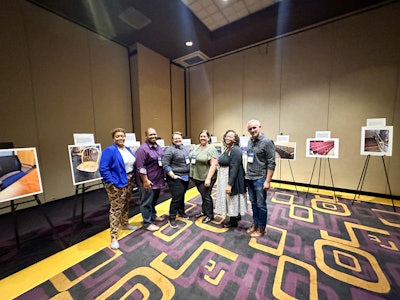By Terah J. Stewart, Roshaunda L. Breeden, Joan N. Collier, Meg E. Evans, Daniel J. Scanlon, Rachel L. Wagner, Erin R. Weston
In the classic fairy tale Goldilocks and the Three Bears readers are introduced to a little girl who happens upon a cottage in the forest where she boldly invites herself inside to explore. While there is much to learn and critique from the themes of her story, the part that is most striking to our author team is the intentional focus on space and fit. Particularly when considering how two of the chairs that Goldilocks sought to rest in were too big, but the third was just right. There is a similar refrain when Goldilocks tries to sleep in three different beds - again in a home where she was uninvited - before finding one was too hard, another too soft, yet the final bed was perfect for her.
One takeaway of this story is the obvious yet powerful assertion that not all of us have the same body and as such not all of us will navigate space or find fit the same. Goldilocks’ struggle to find fit should be unsurprising as the cottage was not her home, so she should not have expected to find comfort in that space. We write today centering the needs and experiences of fat students who sometimes struggle to find fit and space within academia. Fat students, an often hyper(in)visible population, find themselves having experiences that range from uncomfortable to violent within their classrooms and learning environments.  Terah J. Stewart, Roshaunda L. Breeden, Joan N. Collier, Meg E. Evans, Daniel J. Scanlon, Rachel L. Wagner & Erin R. Weston
Terah J. Stewart, Roshaunda L. Breeden, Joan N. Collier, Meg E. Evans, Daniel J. Scanlon, Rachel L. Wagner & Erin R. Weston
Scholars, activists, and practitioners use many terms (e.g., fatphobia, sizeism, and fat-hate) when discussing the structural oppression fat people face. For our purposes, we lean on Fat Activist Aubrey Gordon’s use of the terms anti-fatness and anti-fat bias. Gordon defines these terms as “the attitudes, behaviors, and social systems that specifically marginalize, exclude, underserve, and oppress fat bodies. They refer both to individual bigoted beliefs as well as institutional policies designed to marginalize fat people.” The nuance of this definition should be noted, with a key emphasis on institutions. While a significant body of the literature within fat studies focuses on what we describe as social experiences (bigoted beliefs), within higher education less attention has been given to related systems and structures, including campus spaces and environments.
As a group of scholars and researchers we were interested in such a focus and established the #FatOnCampus research project. Through our work we found that when given the chance to document their experiences fat students overwhelmingly focus on the ways they do not fit in furniture, chairs, and generally within classroom spaces. Fat students’ experiences range from discomfort to stigma and physical pain, all while they are expected to learn. These experiences are due in large part to sizeist structures that suggest there is a “normal type of body” of which most people, if not all, should be expected to fit within. One student described the difficulty of needing to fit into a chair with an attached and non-adjustable desk by talking about the lack of back support and how squeezing into the chair cut into their stomach. Another student described a similar seating arrangement and how the seat “pushes you against the table, it hurt(s).”
In a 2018 article titled, "About Fat Campus" students also articulated similar experiences.




















